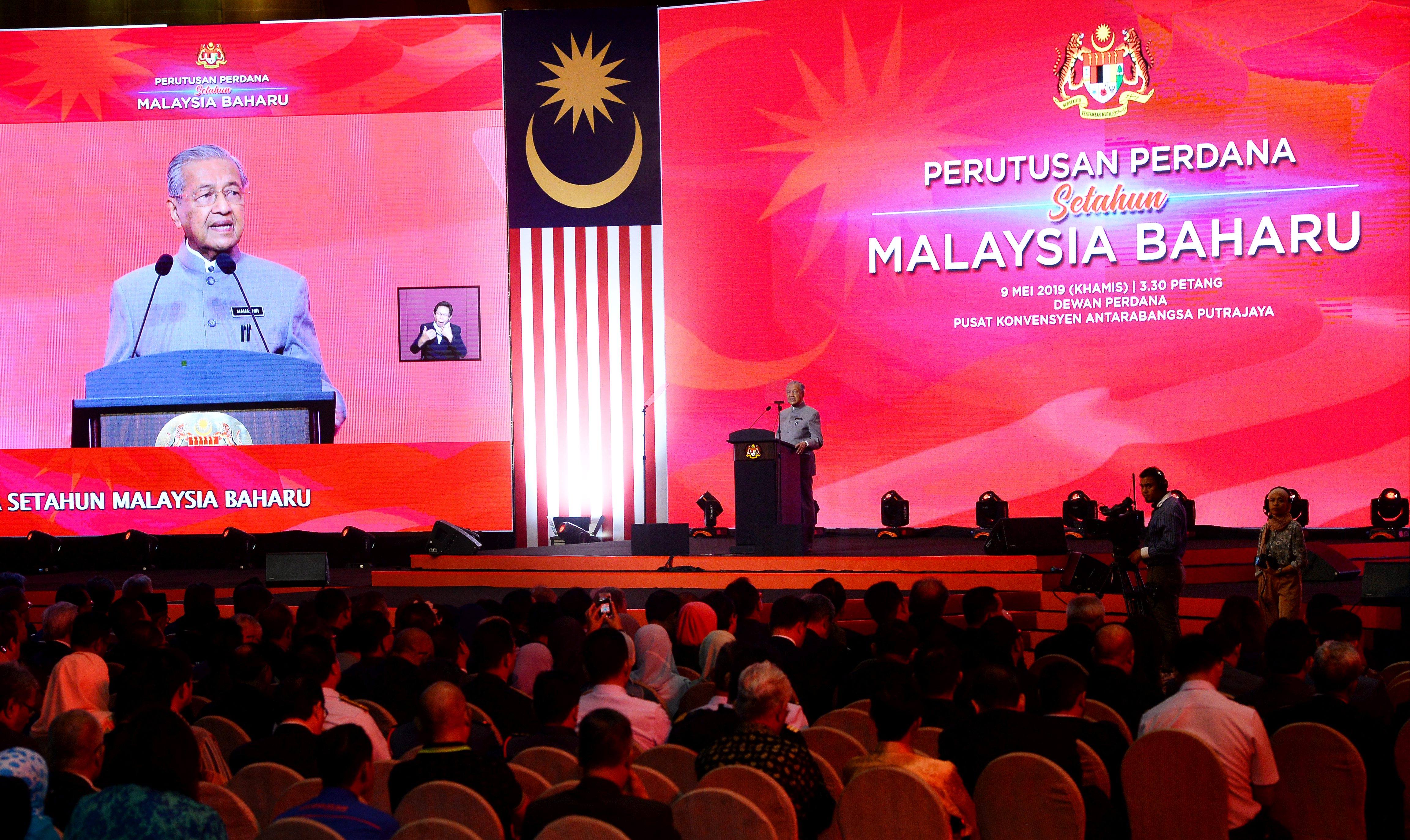
Published by The Star, image from The Star.
ON the anniversary of Pakatan Harapan’s GE14 victory, Prime Minister Tun Dr Mahathir Mohammad announced the new government mantra moving forward: Shared Prosperity 2030.
On the surface, there is of course little that is bad to be said about this concept and phrase. It is innocuous, harmless, and not very controversial. There isn’t much about it that can be considered negative.
It must be asked though: is that enough? How much about it is positive, exciting and captivating?
One week later, perhaps the most that can be said about Shared Prosperity 2030 is that very little has been said about it at all. The discourse, hype and discussion around this concept seem muted at best.
Having a theme and slogan is, I believe, the correct move.
I have written this repeatedly, arguing that the perception of the government could be much improved if its efforts were seen as part of some meta plan and theme.
Of course, it matters what that theme and slogan are exactly.
I do not have enough of a background in economics and such to evaluate the finer details of Shared Prosperity 2030. (Briefly however, it may be useful to compare the concept of shared prosperity to the ideas of equitably shared prosperity proposed by Home Minister Tan Sri Muhyiddin Yassin and Parti Pribumi Bersatu Malaysia strategist Datuk Dr Rais Hussin).
As a communicator though, perhaps I can share some thoughts as to how this slogan might come across to the public.
The slogan will indubitably invite comparisons to previous slogans, so let us start there.
Again, this is not an assessment of the government or leaders behind these slogans, and their successes or lack thereof; this is only an assessment of how attractive the slogans themselves are.
We can go chronologically. The slogan perhaps most associated with Dr Mahathir is in fact Wawasan 2020 or Vision 2020.
This theme was quite pervasive in its time during the early 1990s. It was quite effective in evoking a specific, exciting goal. It inspired Malaysians to imagine ourselves as a developed nation, on par and standing shoulder to shoulder with the other great developed nations in the world.
Around this time, another slogan that gained substantial traction was “Malaysia Boleh” (Malaysia Can), which inspired the same sort of belief in what Malaysians could do, and what Malaysians could be.
The slogan associated with the next Prime Minister, Tun Abdullah Ahmad Badawi, was Islam Hadhari, sometimes translated as “Civilisational Islam”.
Associated with this was the sense of a more moderate Islam, which sketched out the responsibilities and relationship between a just government and its people.
Reception was fairly positive, although again, the concept was generally quite innocuous, and probably could not be said to be particularly inspiring or motivating.
After Abdullah came Datuk Seri Najib Razak’s 1Malaysia.
For all of Najib’s faults, 1Malaysia is probably one of Malaysia’s most “successful” slogans, just by virtue of its reach and degree of traction within the national imagination.
Put simply, there was hardly a Malaysian who wasn’t familiar with the phrase “1Malaysia”. Part of this was of course due to the massive resources poured into publicising the idea of 1Malaysia.
That said, we must give credit to the concept itself. However millions were spent on the conceptualisation, it is a strikingly simple concept – nothing that would require massive investment into research and development.
Its simplicity was a great part of its appeal. The concept consisted of only two parts that transcended any linguistic difference – the number 1, and the name of our nation.
The concept was also as simple as it was compelling: that we were all one under the Malaysian sun.
No discussion of these concepts would be complete without discussing the negative aspects. Both 1Malaysia and Malaysia Boleh in particular eventually lent themselves to massive cynicism.
Malaysia Boleh came to denote all the bad things that could happen in Malaysia, while the idea of 1Malaysia was particularly galling given the inherently racist nature of Barisan Nasional.
Whatever its faults, it is important to note the degree to which 1Malaysia permeated the national imagination.
The question facing the government today is, will Shared Prosperity 2030 find the same traction among everyday Malaysians?
At first glance, the road looks somewhat uphill. While inoffensive, there is nothing greatly inspirational about the idea of shared prosperity.
If a ranking were attempted in terms of traction and reach, perhaps top spot would be a tie between 1Malaysia and Malaysia Boleh, followed by Wawasan 2020, and then perhaps shared (no pun intended) last spot between Shared Prosperity 2030 and Islam Hadhari.
No doubt shared prosperity is a good thing, but it’s not the type of idea that gets the blood running. It doesn’t speak to any type of great unity, or a grand vision of new heights for Malaysia as a nation.
For a while, the term “Malaysia Baharu” had the potential to be that idea – that vision of something fresh and invigorating. But as the Pakatan government failed to take effective ownership of the term and its significance, that phrase soon fell into the domain of the cynical as well.
In GE14, Malaysians embarked on a grand experiment. Giving power to Pakatan meant giving them the mandate to define the rest of this experiment, and to sketch out an inspiring vision that would inspire all Malaysians to work together to become something better than we are today.
Shared Prosperity 2030 may not have been the worst possible start imaginable, but it could be pretty far from the best start imaginable.
Nathaniel Tan is Director of Media & Communications at EMIR Research, an independent think-tank focused on strategic policy recommendations based upon rigorous research.

